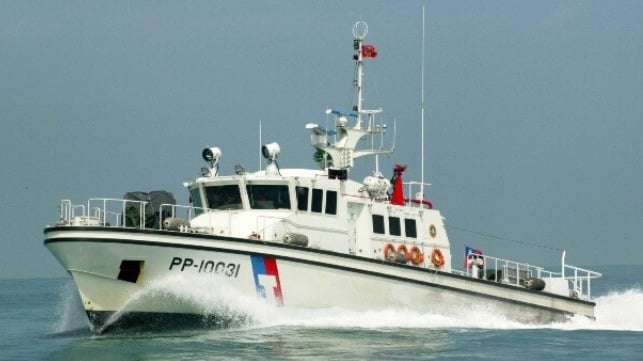Taiwan Increases Monitoring of Offshore Cables, Boarding Suspicious Vessels

Taiwan is following a similar path to NATO and the European countries announcing plans to increase its monitoring of offshore cables and infrastructure in an effort to deter further sabotage efforts. According to details outlined at a press briefing, the Navy and Coast Guard plan to focus on flag of convenience ships that enter a 24 nautical mile perimeter around the island and four key landing zones for the undersea cables.
Responding to questions and ahead of a session with the parliament scheduled for Thursday, January 16, Taiwan’s Ministry of National Defense reported the Navy and Coast Guard would be working together in the effort. The Navy will use its radar and electronic intelligence system to monitor for stopped vessels, those demonstrating “unusual” speed changes, and those that are navigating “suspicious” routes.
Colonel Lee Chang-fu from the Office of the Deputy Chief of General Staff for Operations and Planning told reporters the Navy would lead the surveillance and alert the Coast Guard. The Coast Guard said its priority would be to inspect and likely it would attempt to board suspicious vessels. The Navy may also deploy vessels to assist the Coast Guard.
The media reports indicate the ministry plans to brief the parliament on the plan to increase surveillance and management. The priority will be on ships operating under flags different from their owners’ nationality as they believe those ships have been found to supply the most misinformation. The plan also calls for inspecting flag of convenience ships that dock in Taiwan’s ports.
The effort comes after a Chinese-owned vessel Shunxing-39 was accused by Taiwan of damaging an undersea data cable on January 3. The vessel is reported alternately to show registry in Cameroon and Tanzania while it is owned by a Hong Kong-based company.
Coast Guard officials reported it was “not possible to confirm the real intention of the vessel,” while saying it was another example of China’s “gray-zone harassment” of the island. Due to bad weather, they were not able to board the vessel while China has said Taiwan is making claims without any facts.
Media reports indicate an analysis showed the vessel making “figure eight” turns. It was also spotted making “laps” in the waters north of Taiwan since December.
It was not the first incident in which undersea cables had been damaged. In February 2023, remote communities on the outlying Matsu Islands reported they lost data connections for several weeks. They blamed the damage to two undersea data cables on passing Chinese ships.
Reuters quoted a Taiwanese government official as saying last week that Chinese ships have “the mark of evil about them.” Tensions remain high as China has escalated its claims to the island and declared its intention for reunification.
Taiwan’s National Security Bureau earlier in the week issued a detailed analysis of what it said were China’s gray-zone harassment efforts and specifically spying. The bureau alleged a strong increase in activity reporting 64 people were prosecuted in 2024 in spying cases linked to China up from 48 in 2023 and between 10 and 16 in the previous years.
Yesterday, NATO ministers confirmed a plan to increase monitoring and deterrent efforts in the Baltic to protect undersea cables and other critical infrastructure. Finland, Estonia, Lithuania, and Sweden had previously reported increasing patrols after the Christmas Day incident and the UK and its allies launched a new monitoring program using AI tools to track shadow fleet tankers in the region.
